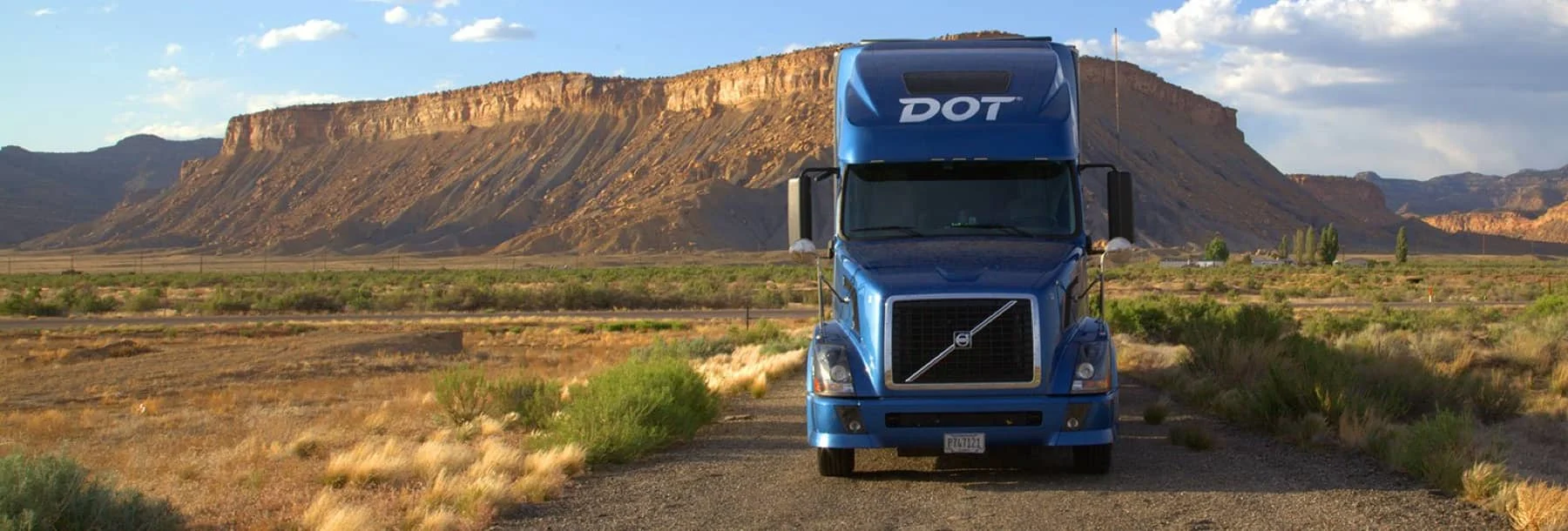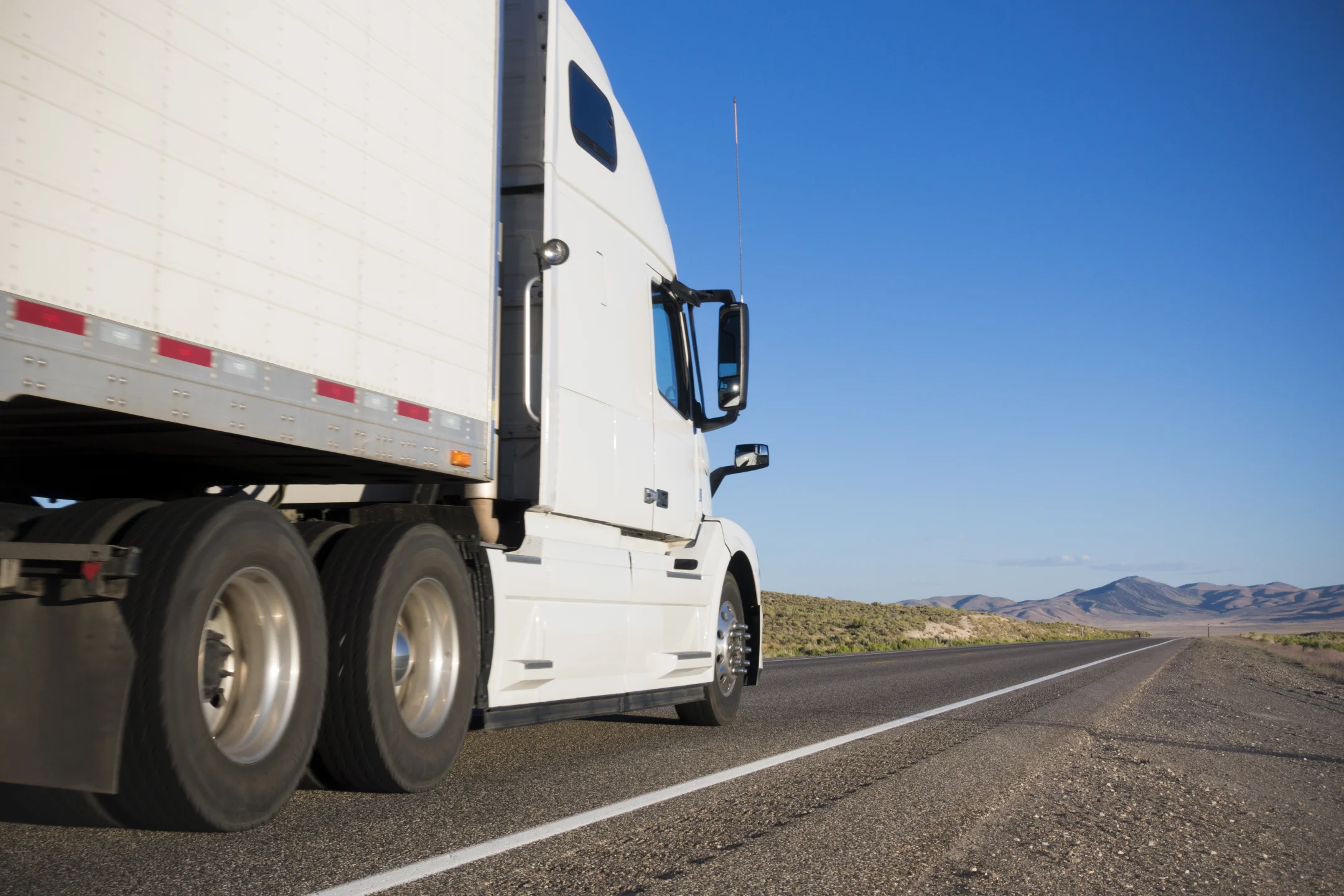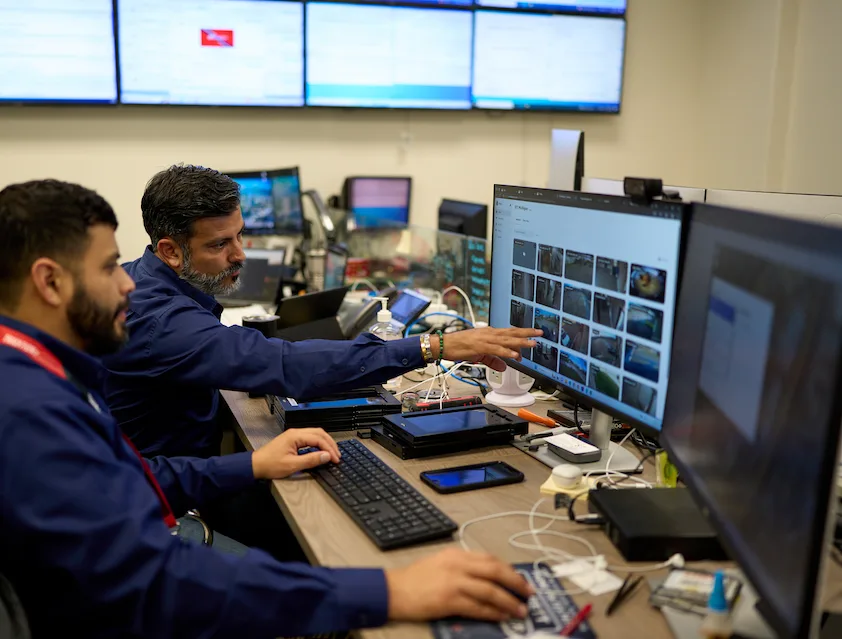Customer Stories, Fleet Safety, Fleet Management, Efficiency
4 Ways Dot Foods is Navigating Driver Safety and Retention During COVID-19
May 26, 2020

Dot Foods is the largest food industry redistributor in North America. The business, which remains family-operated since it was founded 60 years ago, is headquartered in Mount Sterling, Illinois, and includes nearly 1,500 vehicles across their operations in the United States and Canada. Dot Transportation—the distribution affiliate of Dot Foods—partnered with Samsara in 2018 to maintain ELD compliance, improve operational efficiency, and protect drivers with a video-based safety program.
As an industry leader, Dot Foods has been at the forefront of transportation technology adoption, as well as driver safety and health. Not only are they a valued customer, but they’re also a partner to the Samsara product team. They’ve played an integral role in helping Samsara test new features and products, like the Samsara Driver App.
Duskee Kassing, Dot Transportation’s Director of Operations, has spent 26 years with the company in various roles throughout the organization, helping it grow and adapt over time. Last week, we had the opportunity to chat with Kassing to learn more about Dot Transportation’s approach to supporting their drivers and business, especially during these challenging times. Read on to learn four ways Dot Foods is approaching driver retention, safety, and more during COVID-19.
1. Invest in drivers by supporting their lifestyle
In the past, drivers have often been the single household earner and might have had a spouse that stayed home to raise the family. This enabled many drivers to go out on longer hauls that might span weeks or even months, while their partner was able to tend to matters at home. But social norms have shifted. “I think the world we live in has changed a lot, particularly for drivers,” Kassing said.
To accommodate these changes, Dot Transportation knew they’d have to adjust their operating model to attract talent—like younger generations or second-career starters—that might want or need the option to be at home more. To do this, they created a new program called the 4x4 role, where drivers have the ability to work four days and then take the following four days off. This has not only improved driver retention for Dot Transportation, but has helped employees transition into an industry they might have previously known nothing about.
“I think the planned time off is the piece that’s attractive,” Kassing said. “You know when you sign up for that role all the days you have off for the rest of the year. If you’re planning a birthday party or if you want to do a couple of days away from home, then you can do that because you know exactly when you’re going to be home.”
2. Use technology to maintain strong communication with drivers
As soon as Dot Transportation recognized the COVID-19 pandemic would create unprecedented challenges for their business and employees, they quickly got to work. They created 18 committees—ranging from “health and safety” to “education” and “sanitation,”—to support all aspects of the crisis. Alongside these new committees, Kassing said clear communication made the biggest impact.
“One of the things we have found to be the most beneficial for us is to be as transparent as we can with all of our employees,” Kassing said. “But it hasn’t been easy with everyone on the road—it’s one thing to send an email communication that you know everyone is going to read or get in front of them in a meeting.”
To ensure all employees, particularly drivers, are receiving this kind of uninterrupted communication, Dot Transportation relies on Samsara’s Driver App. Dot Transportation uses the app’s messaging system to not only communicate daily workflow changes (like updates to routes or loads), but also to keep drivers up-to-date on any COVID-19 related matters, including safety and sanitization guidelines. Drivers also have the ability to use the Text to Speech functionality for safe, distraction-free messaging, so they can receive important communications without having to disrupt their work.
3. Build a safety-based culture with video coaching
Dot Transportation uses Samsara AI dash cams to create a safety-first culture and exonerate drivers from not-at-fault accidents. They also rely on the video retrieval function to train drivers on safe driving habits and coach drivers on risky driving behavior. These videos have come in handy, particularly at a time when roads look so different today than they did two months ago. With fewer vehicles on the road, there might be a temptation to drive faster than usual. In fact, recent studies have shown that although traffic has decreased, roadways have become more lethal during the pandemic.
“If we see a behavior that is concerning, we have a safety group that reviews footage and brings the driver in to coach them,” Kassing said. These sessions can be incredibly illuminating to the driver because they help them take a step back from the driver’s seat. Behaviors they might have thought were perfectly safe while operating the vehicle suddenly take on a different shape when viewing the footage as a spectator.
“Having that video really helps the driver see it through a different lens,” Kassing said. “When you can show them the footage, then it’s very easy for them to let their guard down and say, ‘Now I see it differently.’”
4. Involve the community to create connection
Giving back to the community has always been a big part of Dot Transportation’s culture. Whether that’s supporting a fundraiser or delivering extra inventory to local food banks, Dot Transportation prioritizes employee involvement in the communities where they operate. This has been a helpful way to keep drivers connected to their communities, especially in a time when connection might feel more difficult.
The feedback Kassing has received from these endeavors has been positive on both ends of the spectrum. The organizations they partner with appreciate their help, and Dot employees get a lot out of the experience too, particularly the drivers who deliver to the food banks.
“If they go out and do it once, a lot of times they’ll come back and say, ‘Hey, when that opportunity happens—I want to go do that again,’” Kassing said.
<a id="blog-inline-1" href="/learn-more" title="Learn more about Samsara" class="btn btn--blue primary-btn red">Learn more about Samsara</a>




















